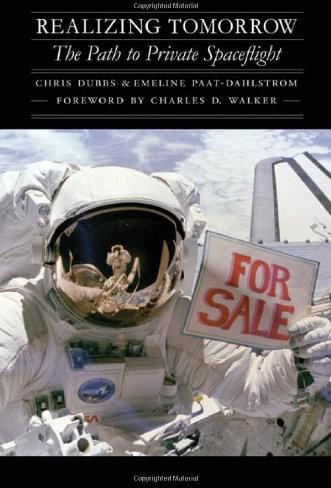
Realizing Tomorrow: The Path to Private Spaceflight
by
Chris Dubbs
,
Emeline Paat-dahlstrom
and
Charles D. Walker
Published 1 Jun 2011
Bottom right: Brian Feeney, president and founder of the Da Vinci Project (an x PRIZE registered team), at the 2005 X Cup in Las Cruces, New Mexico. Courtesy of Brian Feeney. i 26. Burt Rutan, chief designer and founder of Scaled Composites, holds a model of SpaceShipOne. Photograph by Mark Greenberg, courtesy of Virgin Galactic. 27. SpaceShipOne attached to White Knight prior to its first suborbital flight over Mojave, California. Courtesy of Scaled Composites. 28. Mission control at Scaled Composites during the first private suborbital flight. Courtesy of Scaled Composites. 29. Mike Melvill riding on top of SpaceShipOne after the first successful suborbital flight. Courtesy of Robert Pearlman, collectsnncE.com. 30.
…
At about fifteen miles altitude the wings would revert to a normal aircraft configuration, allowing the craft to finish with an unpowered glider landing. "There is nothing you will see today that is a mockup," Rutan told those in attendance. "I didn't want to start the program until we knew that it could happen." Rutan was already referring to Scaled Composites as having created the first private manned space program, which was no exaggeration. Aside from the two new craft, Scaled Composites had developed a hybrid rocket propulsion system, a mobile propulsion test facility, a flight simulator, an inertial-nav flight director, a mobile mission control center, all spacecraft systems, a pilot training program, and a complete flight test program.
…
"We had a pretty good time ... having those young, enthusiastic people working together." Meanwhile, back in Mojave, Rutan was doing the same thing at Scaled Composites with his cadre of young engineers barely out of college. According to Matt Stinemetze, Scaled's project engineer, "Burt has this unique knack to pull together the best designers on the planet, and drag them out to the middle of nowhere with nothing to do but design really cool spaceships." Stinemetze was only twenty-four when he started at Scaled Composites, six years before SpaceShipOne's maiden flight. He was a kid from a small town in Kansas. Growing up, he loved everything about airplanes and, like Rutan, was fascinated with building model airplanes of his own.
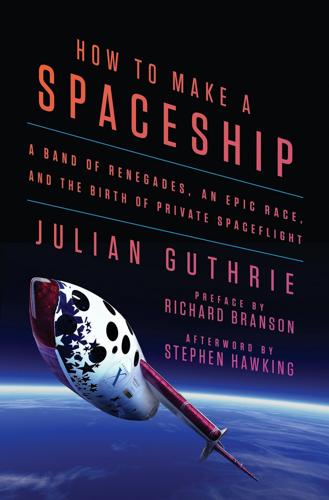
How to Make a Spaceship: A Band of Renegades, an Epic Race, and the Birth of Private Spaceflight
by
Julian Guthrie
Published 19 Sep 2016
Burt Rutan The Voyager’s historic flight by Dick Rutan and Jeana Yeager in 1986, trailed here on the final leg home by brother Burt Rutan and friends Mike and Sally Melvill in their Duchess chase plane. Mark Greenberg Scaled Composites engineer Steve Losey works on the cockpit of what will become SpaceShipOne. Dave Moore The construction of Burt Rutan and Paul Allen’s secret spaceship program, SpaceShipOne—the rocket “mated” with the White Knight—at Scaled Composites in a hangar in the Mojave Desert, California. Dave Moore Scaled Composites unveiled its spaceship program to the world in April 2003. Here, Burt (left) with Mercury and shuttle spacecraft designer Max Faget (center) and astronaut Buzz Aldrin.
…
Part Three A RACE TO REMEMBER 25 A Fire to Be Ignited On November 21, 2002, after delays, false starts, and missed deadlines, Burt Rutan’s Scaled Composites was ready to do a first hot fire test of its hybrid rocket motor. At this point, the still-secret SpaceShipOne—Burt’s hope of getting beyond the atmosphere—remained a work in progress, and time had become an issue. But a successful motor test would be a turning point in what Burt considered the most important project in his company’s history. Getting to this day had been difficult. Scaled Composites had wanted to build everything related to the outside of the motor, including the propellant tank, case, and nozzle.
…
Burt took the money and handed bonuses out to every employee who had some role in making SpaceShipOne, from the guys who cleaned the shop to the engineers and pilots. The bonuses were the equivalent of the employee’s salary for a year. Scaled Composites is now fully owned by Northrop Grumman Corp. A number of people have left Scaled to work at Virgin Galactic, including Doug Shane and Steve Losey, the former crew chief of SpaceShipOne. Virgin Galactic is just down the flight line from Scaled Composites. Stratolaunch is being built in an enormous hangar in a far corner of the Mojave Air and Space Port. —Richard Branson’s Virgin Galactic was established to build on the work of SpaceShipOne and open access to space for more people and payloads, starting with commercial suborbital flights.
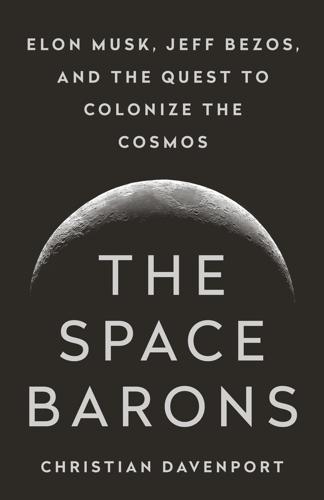
The Space Barons: Elon Musk, Jeff Bezos, and the Quest to Colonize the Cosmos
by
Christian Davenport
Published 20 Mar 2018
A new father, Siebold had a tough decision to make. As hard as it was to disappoint Rutan and the rest of the team at Scaled Composites, he couldn’t go through with it. The flight was just too dangerous. “Peter to his credit had lost faith in all the haste to light a wick under the rocket motor,” Binnie wrote in an unpublished memoir titled “The Magic and Menace of SpaceShipOne.” “He felt that it was unsafe, insufficiently tested and poorly understood. To him, that was three strikes in a critical spaceship system and not worth the risk.” Scaled Composites would tell the public that Siebold was merely sick, and never let on about his concerns that the spacecraft was unsafe and not fully tested.
…
AFTER HANGING UP on the call with his son, Branson hopped in a plane and headed to the crash site. He knew he had to get there as soon as possible. This was the second fatal accident for the program. In 2007, three employees of Scaled Composites had been killed during a ground test of the engine’s nitrous oxide system. The explosion had charred the desert floor, which had looked like a war zone, with debris scattered everywhere and multiple people injured. The California Occupational Safety and Health Administration fined Scaled Composites $28,870, later dropped to $18,560 after appeal. The explosion was “obviously horrendous for the families and a big setback for our program as well,” Branson recalled later.
…
The National Transportation Safety Board had wrapped up its nine-month investigation, concluding that a “lack of consideration for human factors” led to the midair breakup of the spacecraft. It found that Scaled Composites, which had built the vehicle for Virgin Galactic, had failed to properly train its pilots and did not implement basic safeguards to prevent the human error that caused the accident. Yes, Michael Alsbury, the pilot killed in the crash, had unlocked the feather system prematurely. But he never should have been able to do so, the safety board said, and the company’s failure to even consider that possibility was one of a series of systematic failures that had led to the crash. As board member Robert Sumwalt said, Scaled Composites “put all their eggs in the basket of the pilot doing it correctly.”
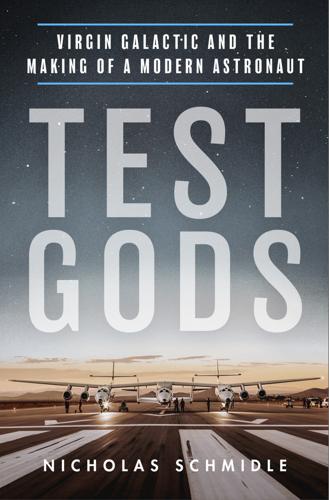
Test Gods: Virgin Galactic and the Making of a Modern Astronaut
by
Nicholas Schmidle
Published 3 May 2021
Kincheloe Award from Society of Experimental Test Pilots risk tolerance and rocket-powered flight test and Rutan and Saling and at Scaled Composites Schmidle (author) and Schmidle (Robert) and Schmidle’s “Rocket Man” profile in New Yorker SETP and shunned by Scaled Siebold and in SkiGull skydiving and at Space Mirror Memorial SpaceShipTwo and SpaceShipTwo’s final glide flight (2018) before rocket-powered flights test flight with Beth Moses on board and as test pilot for NASA as test pilot in Middle East tours Scaled Composites in training squadron in Yuma, Arizona Virgin Galactic and wager with Fischer in Washington, DC at winging ceremony Stucky, Paul Stucky, Sascha Sturckow, Rick (“C.J.
…
[Caustic Junior]”) ceremony in his honor first SpaceShipTwo space flight and Schmidle (author) and at Space Mirror Memorial “suborbital flights” Sunday Times surface-to-air missiles (SAMs) T-34 prop plane T-38s Tai, Alex Taliban Tesla Roadster “Test Gods” Test Pilot “time dilation” Tito, Dennis Today Top Gun (film) Top Gun (school) Tracy, Spencer “transonic zone” Travolta, John Trump, Donald Tyson, Neil deGrasse U-2 Under Armour United Airlines United Arab Emirates US Congress US Defense Department Vance, Ashlee Virgin Galactic absence of metrics and accuses Scaled Composites of sloppiness announces move to New Mexico author’s view of Branson’s dream of challenges faced by clings to its niche “Cosmic Brand and Marketing” division crash of SpaceShipTwo and disbonding issues and first SpaceShipTwo space flight and funding for grayout and grounds SpaceShipTwo Instagram post on “Sticky” IPO and launches Virgin Orbit lead in suborbital race in jeopardy marketing by media and as a movement move to Spaceport America no longer aiming for 328,000 feet O’Donoghue’s report to partnership with Under Armour Patterson and potential to be a viable business publicity and pursues legal action against Scaled Composites reschedules SpaceShipTwo flight rocket motor and rubber-fuel design developed by Scaled Composites and Schmidle (author) embeds with SpaceDev and Spaceship Company and SpaceShipTwo and Stucky and Sturckow and Virgin Hotel Virgin Mobile Virgin Orbit Virgin Records VMFA-333 squadron von Kármán, Theodore Voskhod Vostok Washington, DC Washington Post weather Whitehorn, Will White Knight WhiteKnightTwo at Alsbury memorial service “captive carry” test and first SpaceShipTwo space flight and flight tests and hairline cracks in at party in 2009 Whitesides, George Alsbury’s death and downplays rivalries Ericson’s loss of faith in Ericson’s resignation to fearfulness of first SpaceShipTwo space flight and h-stab problem and indecisiveness of IPO and media and Whitson, Peggy Winslet, Kate Wolfe, Tom Right Stuff, The “Truest Sport: Jousting with Sam and Charlie, The” Wright, Wilbur Wright Brothers X-1 X-15 XCOR X Prize Yamazaki, Taichi Yeager, Chuck Yousafzai, Malala Yuri’s Night Zawahiri, Ayman al- ABOUT THE AUTHOR NICHOLAS SCHMIDLE writes for the New Yorker and is the author of To Live or to Perish Forever: Two Tumultuous Years in Pakistan.
…
Stumped, he felt sickened that the last option to avoid an almost certain death was going to require him to unbuckle, crawl down, open the hatch, jump out, throw his parachute, and watch as Richard Branson’s multimillion-dollar spaceship smashed into pieces on the desert floor, and, perhaps with it, Branson’s dream of making his space tourism company, Virgin Galactic, a reality. Stucky was chasing his own dream. He’d spent almost forty years trying to become an astronaut. He’d done stints in the Marines, the Air Force, and NASA, and he now worked for an experimental aviation firm, Scaled Composites, which Branson, a showboating British mogul, had hired to build and test a spaceship for commercial use. It was beyond zany, Branson’s dream of sending passengers into space aboard this handmade craft they called SpaceShipTwo. But the zany ones were often the ones who made history. When Norman Mailer first embarked on his book about the Apollo program, he couldn’t make up his mind whether Apollo was “the noblest expression of the Twentieth Century or the quintessential statement of our fundamental insanity.”
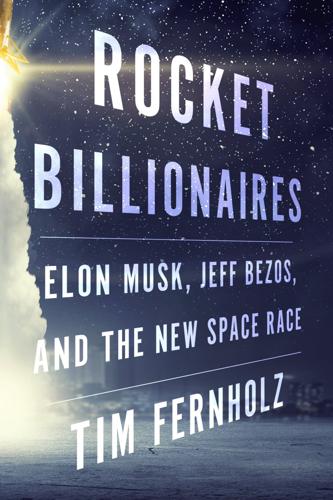
Rocket Billionaires: Elon Musk, Jeff Bezos, and the New Space Race
by
Tim Fernholz
Published 20 Mar 2018
He sought to follow the same model with Virgin Galactic, but the market for SpaceShipOne had so far been limited to Paul Allen and the X Prize. To obtain both a mother ship and a passenger-carrying space plane, Branson created a joint venture with Burt Rutan’s Scaled Composites, called the Spaceship Company (TSC). It would be dedicated to building the flight hardware that Virgin Galactic—and perhaps, in time, other “spacelines”—would market and operate. In practice, this meant that Rutan’s Scaled Composites team was working on the hardware while Branson’s marketers made promises about it. The new, larger vehicle being developed by TSC faced some of the same problems as its predecessor: it was difficult to find a rocket engine small enough and powerful enough to carry it into space.
…
A custom-made mother ship ferried the spacecraft almost nine miles up before cutting it loose; then the pilot would fire up the rocket engine and leave the atmosphere behind entirely. Branson already owned an airline, and he figured he understood the business of putting butts in seats for regular flights, so he created a joint venture with Rutan’s Scaled Composites, calling it the Spaceship Company (TSC). TSC would build a larger, improved version of the vehicle for regular passenger flights. And to that end he launched a new brand, Virgin Galactic. He envisioned daily operations, where seven space tourists would climb aboard the craft, travel to the edge of space, and enjoy a few minutes of weightlessness and incredible views before coming back down for a landing.
…
Residents here don’t find sonic booms or explosions too out of the ordinary, which makes it a perfect place for the aerospace tinkerers who’ve come to test their contraptions at a safe distance from the general population—and from skeptical corporate managers. Burt Rutan, the legendary aviation designer, operated his company Scaled Composites as a kind of private skunkworks here. A few groups—the Reaction Research Society, Friends of Amateur Rocketry, and the Mojave Desert Advanced Rocket Society—maintain engineering sites out there in the desert, complete with concrete bunkers, fueling stations, launchpads, and stands to hold engines in place during testing.

Makers
by
Chris Anderson
Published 1 Oct 2012
Scaled engineers win the respect of their peers with their homebrew builds; constructing and flying a machine of your own design counts for more than any academic degree in winning the trust and confidence of your peers. Each of the rented hangars holds not just an avocation, but also a résumé-builder, a laboratory for new ideas and a test bed for new techniques. Maintaining the link to the garage is how Scaled Composites stays ahead. The DIY culture of Scaled Composites comes from Rutan himself. Born in 1943, his teenage years were full of self-designed model airplanes and competition victories. He figured out how to get a model plane to do a “power stall”—essentially hovering in midair by hanging on its propeller while he remotely controlled the throttle to keep it there.
…
Rutan’s most popular homebuilt, the Vari-Eze, sold fewer than eight hundred units in its entire life. A single Scaled Composite commercial customer could offer more profit with infinitely less hassle. As much as Rutan’s roots were in the DIY movement, the economics of developing advanced designs in secret for big companies and government contracts were irresistible. Most of all, Rutan wanted to design groundbreaking aircraft, not feed the endless demands of the kit business. Today Scaled Composites is owned by Northrop Grumman. For every high-profile design like SpaceShipOne, there is a cruise missile prototype or stealthy drone for the defense industry.
…
These are people we read about who started with little more than a passion and access to tools, and then just didn’t stop. They kept making, building, and taking chances until they had a real business. You can still see the path from the basement workbench to the marketplace, and the consequences of things having been built by hand. This chapter is about three of my own Maker heroes. One, Burt Rutan and Scaled Composites, starts in the 1970s, at the beginnings of the modern DIY movement, and goes all the way to space today. Another, BrickArms, a Lego accessory company, is a classic Long Tail business driven by passion, some cool tools, and the Web. Finally, there is Square, one of the hottest companies in Silicon Valley, which was born when a Maker craftsman and a Web visionary got together to create the ultimate hardware/software combination, one that could someday transform the financial industry.
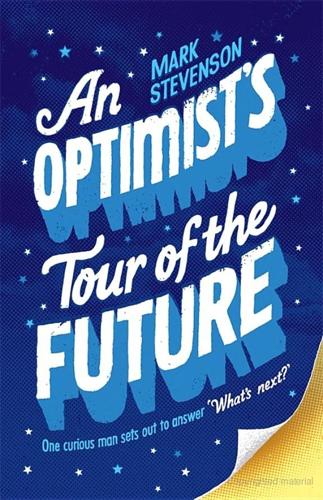
An Optimist's Tour of the Future
by
Mark Stevenson
Published 4 Dec 2010
It’s also peanuts in relation to aviation, given the $330 million list price of an Airbus A380 (of which Virgin Atlantic have six on order). It has to be said that SpaceShipOne was a ‘suborbital’ vehicle that took only short hops into space, but nonetheless the price was impressively low. It was built by Scaled Composites, whose operations are based in Mojave. They’re now working on a small fleet of its successor, SpaceShipTwo, which will shuttle six passengers on two-hour flights beyond the lower atmosphere for a cool $200,000 a ticket. And Scaled Composites is not the only designer and builder of commercial spacecraft in Mojave. I also walk past hangars for Masten Space Systems and XCOR Aerospace. XCOR’s CEO Jeff Greason (whom I’ll meet later) was part of the 2009 Augustine Commission that reviewed the workings of the American space program.
…
Two failed to get off the runway in time, one broke up in a storm over India, one ditched in the Mediterranean and another plummeted into the sea shortly after takeoff from Rome. Mojave has already witnessed tragedy. Less than a hundred yards from where I’m sitting, in the spaceport’s Legacy Park, is a memorial to three employees of Scaled Composites who lost their lives in July 2007 taking part in a propellant flow system test for SpaceShipTwo. ‘At this facility I give you permission to kill yourself,’ says Stuart. ‘Here’s my only limit on that: I don’t want you taking out the whole neighbourhood when you do it.’ The question isn’t if there will be an accident, it’s when.
…
Jeff shows me around XCOR’s hangar where the company is building the Lynx spaceplane – a two-seater craft no bigger than a navy fighter that will take off and land on a normal runway, carrying one passenger or an experimental payload. I sit in a fibreglass mock-up of the Lynx’s cockpit and realise these people aren’t joking. They really are forging a new industry. I look out of the cockpit and see engineers poking tools into rocket engines while Bon Jovi plays over the radio. Less than two-hundred yards away, Scaled Composites is building Space-ShipTwo not as a one-off, but as an actual production spacecraft. ‘The idea is that we always fly full,’ says Jeff. ‘It’ll just be you and the pilot. We also have complete reusability, it’s a “gas and go” model. That’s never been done. We’re trying to make travel to and from space economically sane.’

Beyond: Our Future in Space
by
Chris Impey
Published 12 Apr 2015
Instead of metal, his kits used foam and fiberglass. When asked how long it took to build an airplane, his pithy response was “one and a half wives.” His recreational planes are masterpieces of efficiency and sophistication, but Rutan was looking for a bigger challenge. In 1982, he founded a new company, Scaled Composites, and for thirty years the cutting edge of aircraft design was located “under his wing” in the arid, lunar landscape of Mojave, California.3 Rutan caught the world’s attention with Voyager, the first airplane to circumnavigate the world without refueling, which was considered impossible by many aeronautics experts.
…
Branson has said that White Knight II represents “the chance for our ever-growing group of future astronauts and other scientists to see the world in a new light.” He thinks humanity will have to spread beyond the planet in order to prosper. However, even for pioneers with the magic touch like Branson and Rutan, the space business is risky. In 2007, three people were killed and another three injured in an explosion at Rutan’s Scaled Composites factory, and a year later Rutan said, “Don’t believe anyone who tells you the safety will be the same as a modern airliner’s.” SpaceShipTwo reaches a top speed of 2,500 mph and passengers pull 6 g’s on the way down. They wear helmetless spacesuits, which could be a problem if the spacecraft loses pressure at 300,000 feet.
…
., 239 Los Angeles Times, 71 Losing My Virginity (Branson), 86, 87 Louis IX, king of France, 23 Louis XVI, king of France, 68 Lovelock, James, 286 Lowell, Percival, 163–64 Lucian of Samosata, 20 Lucretius, 18–19 Luna program, 50–51 Lunar and Planetary Laboratory, 156 Lunokhod rover, 143 Lynx rocket plane, 101 M5 fiber, 161 McAuliffe, Christa, 55, 74 Mack 3 Blackbird, 69 McKay, Chris, 173 McLellan, William, 283 magnetic implants, 207 magnetic resonance imaging (MRI), 190 magnetic sails, 186, 223 magnitude of time, 248–50, 249 Manhattan Project, 36, 221 Manifest Destiny, applied to space, 146–47, 199 Manned Habitat Unit, 169 many worlds concept, 17–20, 17, 49, 267 Mao Zedong, 141 Marconi, Guglielmo, 237 Mariner 2, 51 Mariner 4, 164 Marino, Lori, 190 Marriott hotels, 145 Mars, 28, 237, 270 challenges of travel to, 166–70 distance from Earth to, 50, 148, 166 Earth compared to, 171–72, 216 establishing a colony on, 166–71, 169, 192, 195, 200–201, 203, 214, 248 evidence of water on, 124–25, 163–66, 165, 173 fly-bys of, 51, 170 imaginative perceptions of, 163–65 latency on, 178 map of, 163 obstacles to exploration of, 66–67, 148 one-way journey to, 166, 170–71, 200 as potentially habitable, 124–25, 163, 165–66, 171, 172–74, 234, 278 privately funded missions to, 170–71 probes to, 40, 51, 52, 164–65, 176, 246 projected exploration of, 94–98, 101, 104, 115, 119, 157, 161, 163–74, 178, 181, 182 property rights on, 145, 198–99 sex and reproduction on, 200 simulated journey to, 169–70 soil of, 170 staging points for, 161 terraforming of, 172–74, 182, 216, 227 tests for life on, 52 Mars Direct, 169 Mars500 mission, 169 Mars One, 170–71, 198–201 Mars Society, 166 Mars 3 lander, 51 Masai people, 120 Massachusetts General Hospital, 250 Masson-Zwaan, Tanja, 199 mathematics, 19 as universal language, 236–37 Matrix, The, 260 matter, manipulation of, 258 matter-antimatter annihilation, 220, 220, 221–22 Mavroidis, Constantinos, 182 Max-Q (maximum aerodynamic stress), 46 Maxwell, James Clerk, 183 Mayor, Michel, 126–28, 133 medicine: challenges and innovation in, 92–93, 263 cyborgs in, 205 medicine (continued) as lacking in space, 200 in life extension, 259 nanotechnology in, 225, 259 robots in, 180, 181, 182, 205 mediocrity, principle of, 261 Mendez, Abel, 278 mental models, 13–17, 18–19 Mercury: orbit of, 126, 215 property rights on, 145 as uninhabitable, 124 mercury poisoning, 118 Mercury program, 41, 42, 71, 74, 272 meta-intelligence, 94 meteorites, 152, 160, 160, 164, 195 methane, 52–53, 125, 132, 278 as biomarker, 217–18 methanogens, 217 “Method of Reaching Extreme Altitudes, A” (Goddard), 30, 31 Methuselah, 131 mice, in scientific research, 48–49, 250–51 microbes, microbial life, 97–98, 173, 174, 217, 241, 246, 286 habitable environments for, 122–25, 165–66, 186 microcephaly, 203 microgravity, 115 microsatellites, 90 Microsoft, 84, 188 microwaves: beaming of, 223–24 signals, 187 Microwave Sciences, 223 Middle East, population dispersion into, 8, 118 migration: early human population dispersion through, 5–9, 9, 15, 19 motivation for, 9–12, 11 military: covert projects of, 69–72 Eisenhower’s caveat about, 79 in Internet development, 77, 78–79 nanotechnology in, 180–81, 225 in rocket development, 30, 32–39, 55–56, 71 in space programs, 73, 76, 79, 144, 153 Milky Way galaxy, 227, 240, 253, 263, 270 ancient Greek concept of, 18 Drake equation for detectable life in, 188, 233–35 Earth-like exoplanets in, 129–33, 233, 291 formation and age of, 235 size of, 242 Millis, Marc, 290 mind control, 245 mind uploading, 259 miniaturization, see nanotechnology minimum viable population, 201, 251 mining: of asteroids, 155–56, 182, 214 of Enceladus, 227 on Moon, 214 by robots, 178, 182 Minsky, Marvin, 177, 179 MirCorp, 75 mirrors, 173 Mir Space Station, 75, 115, 167–68 Miss Baker (monkey), 47–48, 48 Mission Control, 43, 100, 158, 269 MIT, 38, 77, 90, 141, 226, 257 mitochondrial DNA, 6, 9 Mittelwerk factory, 33, 35 Mojave Desert, 71, 82, 83 population adaptation to heat in, 118–19 molecules, in nanotechnology, 151 Mongols, 23, 24 monkeys, in space research, 47–48, 48 Montgolfier brothers, 68 Moon: age of, 50 ancient Greek concept of, 18 in asteroid capture, 156 distance from Earth to, 49–50, 150, 166, 267 first animals on, 49 first man on, 71, 158 latency on, 178 lunar base proposed for, 157–63, 158, 160, 195, 214, 248 manned landings on, 44–45, 49–50, 54, 56, 63, 71, 84, 99, 104, 108, 143, 157, 158, 176, 219, 270, 272 obstacles to exploration of, 66 orbit of, 25 probes to, 40, 51, 129, 140, 143 projected missions to, 92, 143, 157–63, 166, 214, 275 property rights on, 145–47, 198–99 proposed commercial flights to, 102 in science fiction, 20, 26 soil of, 159, 160, 162 as staging point for Mars, 161 staging points for, 148 telescopic views of, 31, 49–50 as uninhabitable, 124, 166 US commitment to reach, 41–45 Moon Treaty (1979), 146 Moon Treaty, UN (1984), 279 Moore, John, 203 Moravec, 259–60 Morgan, Barbara, 74 Morrison, Philip, 187, 239 Mosaic web browser, 79 Moses, 148 motion, Newton’s laws of, 25, 67–68 multistage rockets, 29 multiverse, 252–57, 255 Musk, Elon, 94–98, 97, 100–101, 112–13, 148, 205 mutation, 6–7 cosmic rays and, 204 7R, 10–12, 11, 15 mutually assured destruction, 42 Mylar, 184, 225 N1/L3 rocket, 44, 54 nanobots, 179–82, 181, 224–28 NanoSail-D, 184, 185 nanosponges, 180 nanotechnology, 151–52, 179–82, 208, 214, 245, 280, 283 projected future of, 257–59 see also nanobots National Aeronautics and Space Administration (NASA), 83, 90, 96, 97–98, 114, 116–17, 128, 144, 153, 156, 176, 178, 182, 184–85, 185, 195, 200, 205, 206, 216, 224, 226, 271, 275, 280, 290 and Air Force, 71 artistic depiction of space colonies by, 196, 196 budget of, 39, 42, 43, 49, 54, 64, 75, 99, 104, 140, 144, 158, 166, 188, 238, 270, 272, 284 cut back of, 45, 49, 54, 188 formation of, 38–39, 145, 269 private and commercial collaboration with, 99–102, 104 revival of, 103–5 space program of, 51, 55–56, 71–76, 92, 157–58, 285–86 stagnation of, 63–67, 141, 147, 166 National Geographic Society, 7, 265 National Radio Astronomy Observatory, 187–88 National Science Foundation (NSF), 78–79 Native Americans, 118 naturalness, 256 natural selection, 6, 16, 123, 164, 251, 291 Nature, 187 Naval Research lab, 37 Navy, US: Bureau of Aeronautics, 30 in rocket development, 36–37 Nayr, Ernst, 238 Nazis, 48 Propaganda Ministry of, 32 von Braun and, 32–34, 141, 269 NBC, 75 Nedelin, Mitrofan, 43 “needle in a haystack” problem, 188–89, 242–43 “Nell” (rocket), 29 Neptune, 127, 131, 225 as uninhabitable, 125 Nergal, 163 Netscape, 80 New Mexico, 88, 88, 105 Newton, Isaac, 24–25, 25, 30, 67–68, 110, 262, 267 New York Times, 30, 94 Nicholas, Henry, 214 Niven, Larry, 198, 253 Nixon, Richard, 108, 167 Nobel Prize, 126, 180, 214 nomad planets, 128 Noonan, James, 266 nuclear fission, 220, 220, 221 nuclear fusion, 110, 161–62, 220, 221, 221, 222 nuclear reactors, 224 nuclear weapons, 36, 42, 78, 129, 146, 197–98, 222, 234–35, 244, 245, 246, 286 Nuremberg Chronicles, 17 Nyberg, Karen, 200 Obama, Barack, 104 Oberth, Hermann, 28, 31–32, 36, 268 oceans: acidification of, 195 sealed ecosystem proposed for, 197 Oculus Rift, 176 Ohio, astronauts from, 74 Okuda, Michael, 228 Olsen, Ken, 213 100 Year Starship project, 224 100 Year Starship Symposium, 229 101955 Bennu (asteroid), 156 O’Neill, Gerard, 196, 251–52 Opportunity rover, 165 optical SETI, 190, 243 Orbital Sciences Corporation, 100–101, 275 orbits: concept of, 25 geostationary, 149–50, 150 legislation on, 146 low Earth, 49, 54, 63, 70–71, 70, 74–75, 97, 100, 110, 113–14, 151, 155, 184 manned, 40–41, 141–42 staging points from, 148 orcas, 190 Orion spacecraft, 104 Orteig, Raymond, 90 Orteig Prize, 90–91 Orwell, George, 35 OSIRIS-REx, 156 Outer Space Treaty (1967), 145–47, 198–99 “Out of the Cradle, Endlessly Rocking” (Clarke), 201 oxygen, 156, 159, 161, 170, 172, 173–74, 182, 193–95, 214 Oymyakon, Siberia, population adaptation to cold in, 119–20 ozone, as biomarker, 217 Pacific Ocean, 9, 224 Pac-Man, 175 Page, Larry, 92 Paine, Thomas, 167 Pale Blue Dot (Sagan), 121 “Pale Blue Dot,” Earth as, 53, 118–22, 121, 130 Paperclip, Operation, 141 parabolic flight, 93 paradox, as term, 241 Paratrechina longicornis (crazy ant), 193 Parkinson’s disease, 202–3 particle physics, standard model of, 256 Pascal, Blaise, 120 Pauley, Phil, 196–97 PayPal, 95, 97 Pensées (Pascal), 120 People’s Daily, 162 People’s Liberation Army, 144 Pericles, 18 Pettit, Don, 100, 273 phenotype, 6 philanthropy, 95 PhoneSat, 185 photons, 183, 186 in teleportation, 229, 230, 231 photosynthesis, as biomarker, 217 pigs, 250 Pinker, Steven, 16 Pioneer probes, 50, 51–52 piracy, 24 Pitcairn Island, 202 planetary engineering, 172 Planetary Resources, 156 planetary science, 51–52, 176 Planetary Society, 184 planets: exploration of, 49–53 formation of, 156 plate techtonics, 132, 241 play, imagination in, 10, 14 pluralism, 17–20, 17, 49 plutonium, 66 poetry, space, 272–73 politics, space exploration and, 63–64, 104, 141, 214, 238 Polyakov, Valeri, 115, 167–68 population bottleneck, 201–2, 287 Poynter, Jane, 193 Princess of Mars, A (Burroughs), 164 Principia (Newton), 25 Project Orion, 221, 221 Project Ozma, 187–88, 237, 253 prokaryotes, 172 property rights, in space, 145–47, 198 Proton rockets, 65, 113 proton scoop, 222–23 Proxmire, William, 238 Puerto Rico, 239, 243 pulsar, 131 Pythagorean Theorem, 238 Qian Xuesen, 141 Qi Jiguang, 24 Qualcomm Tricorder X Prize, 92 quantum entanglement, 230–32, 230 quantum genesis, 255 quantum mechanics, 258 quantum teleportation, 230–32, 230 quantum theory, 189 qubits, 230 Queloz, Didier, 126–28, 133 R-7 rocket, 37 R-16 rocket, 43 radiation, infrared, 109, 253–54, 254 radioactivity, as energy source, 124, 181 radio waves, 66, 187, 189, 242 ramjets, 222–23 RAND Corporation, 222 Rare Earth hypothesis, 241 RCS Energia, 106 RD-180 engine, 72 Reagan, Ronald, administration of, 167, 271 reality TV, 75, 171, 214, 282 “Realm of Fear,” 229 reasoning, human capacity for, 13–17, 18–19 red dwarfs, 131 Red Mars (Stanley), 174 Red Scare, 141 Redstone rocket, 36–37, 71 reindeer, 119–20 remote sensing, 175–91, 224 RepRap Project, 227 reproduction, sexual, 6, 172 Ride, Sally, 74 “Right Stuff,” as term, 71, 114 Right Stuff, The (Wolfe), 272 Ringworld series (Niven), 253 risk: as basic to human nature, 9, 262 genetic factor in, 10–12 of living on Mars, 167–70 in pushing human limits, 120 of space tourism, 102, 105–9, 155 of space travel, 42–43, 55–56, 56, 106–9, 152–53 Robinson, Kim Stanley, 174 robonaut project, 179 robots, robotics: as aids to humans, 249, 250 in asteroid redirection, 104 commercial, 178 ethical issues of, 179 nanotechnology in, 179–82, 181 remote control of, 177–78 remote sensing through, 176 self-assembly and self-replication by, 226–28, 258, 259 in spacecraft, 50, 100, 100 space exploration by, 53–57, 66, 98, 133, 161, 177–79, 179, 208, 224–28 see also cyborgs; nanobots Rocketdyne, 112 rocket equation, 27, 53, 72–73, 110–11, 111, 148, 220, 268 rocket fuel, 110–13, 148, 156, 159, 161 comparison of efficiency of, 219–24 Rocket Performance Calculator, 222 rockets: alternatives to, 148–53 “bible” of, 267 challenges in launching of, 43–44, 46–49, 106, 107, 111–12, 148 comparison of US and Soviet, 44 cost of, 112–13, 113 developing technology of, 21–39, 43, 101, 103, 112–13, 183, 262 fuel for, 110–13, 148, 156, 159, 161, 220–21 launched from planes, 84 liquid-fueled, 28–29, 29 physics and function of, 110–14 proposed energy technologies for, 220–24 reusable, 101, 103, 111, 112, 113 solar sails compared to, 183 as term, 23 visionaries in development of, 26–30, 94 in warfare, 22–24, 30, 32–34 see also specific rockets “Rockets to the Planets in Space, The” (Oberth), 28 Rogers Commission, 271 Rohrabacher, Dana, 284 Rome, ancient, 18, 67, 163 Rovekamp, Roger, 207 rovers, 66–67, 92, 125, 140, 143, 158, 165, 167 nanotechnology in, 181–82 remote sensing through, 176 Rozier, Jean-François de, 68 RP-1 kerosine, 110 RS-25 rocket, 112 Russia, 23, 26–27, 149, 178 space program of, 37, 65–66, 72, 75, 84, 91, 104, 106, 107–8, 113, 114, 140, 143, 168, 184, 195, 200, 271 space tourism by, 75, 102 tensions between US and, 72 see also Soviet Union Russian Revolution, 27, 47 Russian Space Agency, 102 Rutan, Burt, 72, 82–86, 85, 88, 88, 89, 91, 97–98, 105–6, 214 Rutan, Dick, 83–84 Rutan Aircraft Factory, 83 Saberhagen, Fred, 177, 259 Sagan, Carl, 53, 121–22, 121, 176–77, 184, 198, 234–35, 238, 240 Sahakian, Barbara, 98 Sahara Desert, 238 sails: solar, 183–86, 185 wind-driven, 67–68, 183, 262 Salyut space station, 54, 108 satellites: artificial Earth, 36–39, 37, 40, 65, 71, 106 commercial, 96, 105 communications, 101, 142, 153 in energy capture, 253 geostationary, 149 GPS, 144 launching of, 154, 154 miniature, 90, 184–85 Saturn: moon of, 125, 227 probes to, 52–53 as uninhabitable, 125 Saturn V rocket, 43, 44, 46, 54, 83, 104, 111, 113, 113, 166 Scaled Composites, 83, 89 science fiction, 192, 196, 222, 223, 239, 250, 253 aliens in, 186–87 in film, 28, 204 Mars in, 164, 174 roots of, 20 technologies of, 228–32, 259 see also specific authors and works scientific method, 213 Search for Extraterrestrial Intelligence (SETI), 187–90, 234, 239, 254 evolution and technology of, 237–39, 242–43, 242 lack of signals detected by, 236–37, 240–44 new paradigms for, 258 “Searching for Interstellar Communications” (Cocconi and Morrison), 187 sea travel: early human migration through, 8, 9 exploration by, 109, 262 propulsion in, 67–68 self-replication, 226–28, 258, 259 Senate, US, Armed Services Preparedness Committee of, 39 SETI Institute, 188 78–6 (pig), 250 sex: promiscuous, 12 in reproduction, 6, 172 in space, 200, 214 Shackleton Energy Company, 161 Shane, Scott, 98 Shatner, William, 88–89 Shelley, Mary, 206 Shenlong (“Divine Dragon”), 145 Shenzhou 10, 142–43 Shepard, Alan, 41, 84 Shostak, Seth, 243 Siberia, 65, 119–20, 238 population dispersion into, 8, 118, 218 Sidereal Messenger, The (Galileo), 270 Siemienowicz, Kazimierz, 267 Simonyi, Charles, 75 Sims, 175 simulation: infinite regression in, 261 living in, 257–62 simulation hypothesis, 261 Sinatra, Frank, 45 singularity, 207 in origin of cosmos, 255 and simulation, 257–62 technological, 258–59 Singularity University, 94, 259 Skylab space station, 54, 116 Skype video, 176 smart motes, 181, 225 smartphones, 92, 185 Smithsonian Institution, 30, 81 Smithsonian National Air and Space Museum, 85, 91, 271 Snow Crash (Stephenson), 103 Snowden, Edward, 178 social media, 195 Sojourner rover, 165 SolarCity, 96–97 solar flares, 167 solar power, 96, 181, 183–86 solar sails, solar sailing, 183–86, 185, 223, 225, 227 Solar System: discovery of first planet beyond, 126–27 edge of, 50, 53, 121 formation of, 156 habitability potential in, 122, 124–26 latency variations in, 178 probes into, 51–52, 66, 177, 185–86, 208, 270 projected travel within, 248–49, 263 property rights in, 145–47, 198 worlds beyond, 126–29, 156, 208, 215, 250, 263 solar wind, 162, 223 sound barrier, breaking of, 69, 71 South America, 11, 202, 218 Soviet Union, 30, 34, 37, 141 fall of, 47, 65, 75, 197, 271–72 rocket development in, 35–39 space program failures and losses of, 43, 47, 50–51, 54, 269 space program of, 37–39, 40–43, 141, 149, 237, 271 Soyuz spacecraft, 43, 55, 75, 84, 91, 102, 106, 113, 143 crash of, 107–8 space: civilians in, 55, 74 civilian vs. military control of, 37–39, 69–71, 79, 153 commercialization of, 55, 63, 73–76, 79–80, 88–89, 92, 97, 99–109, 100, 110, 147, 153–56, 154, 199, 214, 249, 275 debris in, 144, 152 first American in, 41 first man in, 40–41, 41 first women in, 40, 74 as infinite, 18, 19, 22 as inhospitable to human beings, 53–54, 114–17, 121 legislation on, 39, 78, 90, 144, 145–47, 198–200 living in, 192–208 “living off the land” in, 166, 200 peaceful exploration of, 39 potential for human habitabilty in, 123 prototype for sealed ecosystem in, 192–97 Space Act (1958), 39, 90 Space Adventures, 102, 275 space colonization: challenges of, 197–201 cyborgs in, 204–8 evolutionary diversion in, 201–4 legal issues in, 198–200 of Mars, 166–71, 169, 192, 195, 203 off-Earth human beings in, 215, 250–51 prototype experiments for, 192–97 space elevators, 27, 148–53, 150, 160–61, 185, 280 “Space Exploration via Telepresence,” 178 Spaceflight Society, 28 space hotels, 102–3 Space Launch System (SLS), 104 space mining, 155–56, 161–62 “Space Oddity,” 142 spaceplanes, 71–72, 85, 144 Spaceport America, 1–6, 105 Space Race, 35–39, 37, 40–43, 50, 55, 139 SpaceShipOne, 72, 85, 85, 88–89, 88, 91 SpaceShipTwo, 88, 101, 105 Space Shuttle, 45, 46, 49, 64, 72, 84, 85, 111–13, 112, 159, 167, 194, 219–20, 222, 275 disasters of, 55–56, 56, 74–75, 107, 111–13 final flight of, 271 limitations of, 55–56, 64–65 as reusable vehicle, 54–55 space sickness, 114 spacesuits, 89, 182, 195–96 space-time, 255, 255 manipulation of, 258 space tourism, 63, 73, 75–76, 79–80, 88–89, 91, 101–3, 154, 170, 214 celebrities in, 88, 101–2 revenue from, 154–55, 155 risks of, 102, 105–9, 155 rules for, 105 space travel: beyond Solar System, see interstellar travel bureaucracy of, 105–10, 271 cost of, 39, 42, 45, 49, 54, 55, 66, 75, 81–82, 91, 112–14, 113, 139–49, 153, 155–56, 158–59, 161, 166, 179, 183, 198, 214, 217, 222, 224–26, 252, 270, 275, 284 early attempts at, 21–22, 22 effect of rocket equation in, see rocket equation entrepreneurs of, 81–98 erroneous predictions about, 214 failures and disasters in, 21–22, 22, 38, 43, 47, 50–51, 54–56, 56, 63–64, 68, 72, 74–75, 101, 102, 107, 142, 184, 269, 271, 275 fatality rate of, 107–9 fictional vignettes of, 1–4, 59–62, 135–38, 209–12 Internet compared to, 76–80, 77, 80 life extension for, 250–51 lifetimes lived in, 251 living conditions in, 114–17 new business model for, 99–105 Newton’s theories as basis of, 25 obstacles to, 21, 63, 66–67, 105–109 space travel (continued) as part of simulation, 261–62 public engagement in, 45, 73, 85, 93, 162, 177, 217 remote sensing vs., 175–91 risks of, 43–44, 83, 89, 93, 105–9 speculation on future of, 76–80, 133, 213–32, 248–52 suborbital, 84 telescopic observation vs., 49–50 visionaries of, 26–39, 80, 94, 109 SpaceX, 96, 97, 100–103, 113–14, 275 SpaceX Dragon spacecraft, 96, 100, 100, 102, 170 special theory of relativity, 228, 231 specific impulse, 220 spectroscopy, 127, 165, 176 spectrum analyzer, 237 Speer, Albert, 34 Spielberg, Steven, 238 Spirit of St.
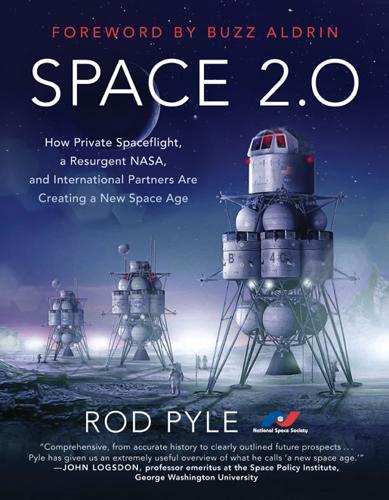
Space 2.0
by
Rod Pyle
Published 2 Jan 2019
In a press release highlighting its final write-up of the accident, the National Transportation Safety Board (NTSB) noted that there appeared to have been human error involved in the early deployment of the feathering system. “The National Transportation Safety Board determined the cause of the Oct. 31, 2014 in-flight breakup of Space-ShipTwo was Scaled Composite’s [Rutan’s original company] failure to consider and protect against human error and the co-pilot’s premature unlocking of the spaceship’s feather system as a result of time pressure and vibration and loads that he had not recently experienced.”47 The report continued to detail that the pilots had not been properly trained, and that the feathering system should have had a safety-interlock system, which has since been added.
…
.: Saturn V Rohrabacher, Dana, 238 Roscosmos, 186–187, 206, 291 Rosen, Stanley, 32, 235, 236 Russian Academy of Sciences, 79 Russian space program, xiv, 12, 183–188. see also Soviet Union achievements of, 183–184 challenges facing, 184–187 Chelyabinsk asteroid collision, 226 collaboration with India, 177–178 cooperative crewed missions with US, 167 crewed stations in LEO, 61–62 future of, 187 international collaboration, 48 launch vehicles, 186, 187 lowering launch costs, 148 Mars aspirations of, 65, 79 militarizing space, 170–171, 220–221 Mir space station, 2, 44, 46–47, 48, 54, 166–167, 167, 184–185 NASA partnership with, 247 nuclear weapons against asteroids, 230 radiation guidelines of, 86 selling parts to United Launch Alliance, 140 Soyuz, 7–8, 42–43, 44, 47, 48, 49, 49, 55, 59, 183, 185, 189, 195, 201, 246 space entrepreneurs in, 181 and Ukraine, 153 Zarya module, 171 Rutan, Burt, 94, 99, 102 S SAA (Space Act Agreements), 215 safety, of spaceflight systems, 99–100, 107 Sagan, Carl, 265 Saint-Exupéry, Antoine de, 1 Salyut space station, 71–72, 184 satellites Chinese, 195–196 commercial, 28–29 global broadband internet via, 130–132 Indian, 176, 177, 178 in low Earth orbit, 107 Planet Labs, 160 for small launches, 102 solar-power, 204, 234, 248 space entrepreneurs and, 93–100 weather, 235 Saturn, 170, 197 Saturn V moon rocket, 17, 44, 45, 52, 115, 128, 129, 216, 255, 256 Saudi Arabia, 155, 180 Scaled Composite, 99 Sea Launch, 153, 154 SEDS (Students for the Exploration and Development of Space), 269 SELENE mission, 175 The Seti Institute, 268 settlement model, expeditionary vs., 237 settlements in space. see space settlements 747 carrier plane, 101 Shackleton, Ernest, 233 Shanghai Science and Technology Museum, 49, 201 Shedd, John A., 99 Shenzhou stations, 49, 49, 193, 193, 195, 195, 199, 201, 291 Shepard, Alan, 42, 43–44, 136 Shotwell, Gwynne, 117–118, 121, 124, 124–126, 128–131 Shuguang spacecraft, 192 Siddiqui, Asif, 186–187 Sierra Nevada Corporation, 12, 52 Silicon Valley, 31, 211 Sino-US partnership, 195 65803 Didymos (asteroid), 228, 229 Skylab, 46, 71–72, 72, 77, 87, 256 SLC-4E (Space Launch Complex 4E), 112 sleep cycles, 76 SLS. see Space Launch System smallsats, 103 smartphones, 105, 106 Smithsonian Institution, 236 solar-power satellites, 204, 234, 248 solar radiation, 84 South Korea, 180 Soviet Union. see also Russian space program Energia booster, 128 “handshake in space,” 166 international cooperation with, 164, 198 Mir space station, 44, 167 N1 moon rocket, 185 Salyut, 71 and space race, 42, 69, 163–165, 176, 194 Sputnik, 40, 40, 183, 191 unsuccessful trips to Mars, 177 Soviet Venera 13 probe, 184 Sowers, George, 146–147, 208 Soyuz, 291–292 Apollo docking with, 166 Apollo-Soyuz Test Project, 165–166 cost of seats on, 8 for government spaceflight, 246 for human travel, 49 improvements to, from Chinese National Space Agency, 195, 201 and International Space Station, 48, 48, 49, 185, 189 landing, 19 in low Earth orbit, 59 replacement of, 185–186 for travel to the moon, 42–43, 55, 183 space aurora as seen from, 61 commercialization of, 212–217 defined, 292 involvement in, 263–271 medical impact of, on the body, 72–76 militarization of, 170, 170–171 sunset as seen from, 16 and survival of humanity, 20–21, 34–36 temperatures in, 21 travel destinations in, 59–60 travel to and from, 15–23 Space 2.0, 292 Space Act Agreements (SAA), 215 space age cooperation between US and Russia during, 48 first, 39–55 and human-rated spacecrafts, 49–55 rebirth of, 255–261 and space race, 40–44, 48 space agencies, international, 180–181 Space Angels, 155, 155–158, 220 space colonies, 236 spacecraft.
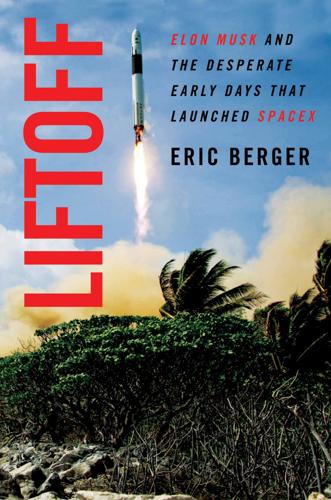
Liftoff: Elon Musk and the Desperate Early Days That Launched SpaceX
by
Eric Berger
Published 2 Mar 2021
Buzza set about establishing a test site where the company could put the Merlin engine through its paces. The Mojave Air and Space Port north of Los Angeles offered facilities for engine testing. No place in the world is really like it, combining an airport, a spaceport, an airplane graveyard, and rocket development warehouses. It was where, in 2004, Scaled Composites’ SpaceShipOne made the first privately funded human spaceflight. In the 2000s, other companies such as XCOR, Masten Space Systems, and Virgin Galactic called the facility home for their development operations. It seemed an ideal location for SpaceX, and initially Buzza reached a deal to use some of XCOR’s property and equipment for tests.
…
See also Omelek site Redstone Arsenal, 56 Reduced-gravity flight, 141–42 Reingold, Jennifer, 86 Relativity Space, 248, 251 Rémy Martin, 27–29, 145 Renaissance Hotel, 12–13 Ressi, Adeo, 9–10, 12, 237 Reusable launch systems, 230–34 Richichi, Jeff, 168, 231–32, 262 Ride, Sally, 50, 99–100 Riley, Talulah, 216 “Risk tolerance,” 245 Rocket Boys (Hickam), 153 Rocketdyne, 32, 33, 126. See also Aerojet Rocketdyne Rocket Lab, 236, 245 Rocket reuse, 230–34 Role models, 99, 100 Romo, Eric, 155, 261 Ronald Reagan Ballistic Missile Defense Test Site, 55, 58, 67, 169. See also Omelek site Rotary Rocket, 142 Roth, Ed, 184 Sales, 95–116 Scaled Composites, 39–40 Scorpius, 79–80 Sea Launch, 125, 126 Seal Beach, 53 Searles, Rachel, 21, 22 Sea salt spray and corrosion, 121–23, 233 Sensors, 124, 136 September 11 attacks (2001), 98–99 Sexism, 51, 62 Sheehan, Mike, 185, 190–91, 193, 195–96 Shotwell, Gwynne, 255–56 at Aerospace Corporation, 102 Air Force and, 61–62 background of, 99–101 at Chrysler, 101–2 Falcon 1’s Washington, D.C. debut, 105 Flight One failure, 120 Flight Four launch, 202–3 success, 210–11 hiring of, 95–98 Lockheed Martin and, 112–13 at Microcosm, 50, 95, 96, 102 Omelek site, 54–55 Quake parties, 17–18 sales, 17, 54–55, 96, 97–98, 103–4, 106–7, 112–14, 115, 116, 216, 220 222 Shotwell, Robert, 202–3, 210 Sloan, Chris, 262 Slosh baffles, 127–28, 138, 140 Society of Women Engineers, 100 Solar sails, 10, 164 Soyuz, 93 Space and Missile Defense Command, U.S.

Bold: How to Go Big, Create Wealth and Impact the World
by
Peter H. Diamandis
and
Steven Kotler
Published 3 Feb 2015
A small team is capable of solving the challenge. The ideal competition can be solved by a reasonably small team. In the case of the DARPA Grand Challenge for autonomous cars, it was a team of graduate students from Stanford. In the case of the Ansari XPRIZE, it was a group of thirty engineers from Scaled Composites. Projects requiring a team much larger will likely run into fund-raising and management challenges. 4. You are flexible on timeline, types of solutions, and who might win. When using an incentive prize solution, you give up a certain amount of control in exchange for getting unexpected, potentially breakthrough results from nontraditional players.
…
., 34, 95, 96, 99, 109, 172, 175, 179, 180, 186, 189–90, 193, 195, 201–3, 221, 228, 230 Planetary Society, 190, 200 Planetary Vanguards, 180, 201–3, 212, 230 PlanetLabs, 286n +Pool, 171 Polaroid, 5 Polymath Project, 145 Potter, Gavin, 255–56 premium memberships, 242 PricewaterhouseCoopers, 146 Prime Movers, The (Locke), 23 Princeton University, 128–29, 222 Prius, 221 probabilistic thinking, 116, 121–22, 129 process optimization, 48 Project Cyborg, 65 psychological tools, of entrepreneurs, 67, 115, 274 goal setting in, 74–75, 78, 79, 80, 82–83, 84, 85, 87, 89–90, 92, 93, 103–4, 112, 137, 185–87 importance of, 73 line of super-credibility and, 96, 98–99, 98, 100, 101–2, 107, 190, 203, 266, 272 passion as important in, 106–7, 113, 116, 119–20, 122, 125, 134, 174, 249, 258 Peter’s Laws in, 108–14 and power of constraints, 248–49 rapid iteration and, 76, 77, 78, 79–80, 83–84, 85, 86, 120, 126, 133–34, 236 risk management and, see risk management science of motivation and, 78–80, 85, 87, 92, 103, 254, 255 in skunk methodology, 71–87, 88; see also skunk methodology staging of bold ideas and, 103–4, 107 for thinking at scale, see scale, thinking at triggering flow and, 85–94, 109 public relations managers, in crowdfunding campaigns, 193–94 purpose, 79, 85, 87, 116, 119–20 in DIY communities, see massively transformative purpose (MTP) Qualcomm Tricorder XPRIZE, 253 Quirky, 18–20, 21, 66, 161 Rackspace, 50, 257 Rally Fighter, 224, 225 rapid iteration, 76, 77, 78, 79–80, 83–84, 85, 86, 236 feedback loops in, 77, 83, 84, 86, 87, 90–91, 92, 120 in thinking at scale, 116, 126, 133–34 rating systems, 226, 232, 236–37, 240 rationally optimistic thinking, 116, 136–37 Ravikant, Naval, 174 Raytheon, 72 re:Invent 2012, 76–77 reCAPTCHA, 154–55, 156, 157 registration, in online communities, 232 Reichental, Avi, 30–32, 35 Rensselaer Polytechnic Institute, 4 reputation economics, 217–19, 230, 232, 236–37 Ressi, Adeo, 118 ReverbNation, 161 reward-based crowdfunding, 173, 174–80, 183, 185, 186–87, 195, 205, 207 case studies in, 174–80 designing right incentives for affiliates in, 200 early donor engagement in, 203–5 fundraising targets in, 186–87, 191 setting of incentives in, 189–91, 189 telling meaningful story in, 196–98 trend surfing in, 208 upselling in, 207, 208–9 see also crowdfunding, crowdfunding campaigns rewards, extrinsic vs. intrinsic, 78–79 Rhodin, Michael, 56 Richards, Bob, 100, 101–2, 103, 104 Ridley, Matt, 137 risk management, 76–77, 82, 83, 84, 86, 103, 109, 116, 121 Branson’s strategies for, 126–27 flow and, 87, 88, 92, 93 incentive competitions and, 247, 248–49, 261, 270 in thinking at scale, 116, 121–22, 126–27, 137 Robinson, Mark, 144 Robot Garden, 62 robotics, x, 22, 24, 35, 41, 59–62, 63, 66, 81, 135, 139 entrepreneurial opportunities in, 60, 61, 62 user interfaces in, 60–61 Robot Launchpad, 62 RocketHub, 173, 175, 184 Rogers, John “Jay,” 33, 38, 222–25, 231, 238, 240 Roomba, 60, 66 Rose, Geordie, 58 Rose, Kevin, 120 Rosedale, Philip, 144 Russian Federal Space Agency, 102 Rutan, Burt, 76, 96, 112, 127, 269 San Antonio Mix Challenge, 257–58 Sandberg, Sheryl, 217, 237 Santo Domingo, Dominican Republic, 3 Sasson, Steven, 4–5, 5, 6, 9 satellite technology, 14, 36–37, 44, 100, 127, 275, 286n scale, thinking at, xiii, 20–21, 116, 119, 125–28, 148, 225, 228, 243, 257 Bezos’s strategies for, 128, 129, 130–33 Branson’s strategies for, 125–27 in building online communities, 232–33 customer-centric approach in, 116, 126, 128, 130, 131–32, 133 first principles in, 116, 120–21, 122, 126, 138 long-term thinking and, 116, 128, 130–31, 132–33, 138 Musk’s strategies for, 119–23, 127 Page’s strategies for, 136–38 passion and purpose in, 116, 119–20, 122, 125, 134 probabilistic thinking and, 116, 121–22, 129 rapid iteration in, 116, 126, 133–34 rationally optimistic thinking and, 116, 136–37 risk management in, 116, 121–22, 126–27, 137 Scaled Composites, 262 Schawinski, Kevin, 219–21 Schmidt, Eric, 99, 128, 251 Schmidt, Wendy, 251, 253 Schmidt Family Foundation, 251 science of motivation, 78–80, 85, 87, 92, 103 incentive competitions and, 148, 254, 255, 262–63 Screw It, Let’s Do It (Branson), 125 Scriptlance, 149 Sealed Air Corporation, 30–31 Second Life, 144 SecondMarket, 174 “secrets of skunk,” see skunk methodology Securities and Exchange Commission (SEC), US, 172 security-related sensors, 43 sensors, see networks and sensors Shapeways.com, 38 Shingles, Marcus, 159, 245, 274–75 Shirky, Clay, 215 ShotSpotter, 43 Simply Music, 258 Singh, Narinder, 228 Singularity University (SU), xi, xii, xiv, 15, 35, 37, 53, 61, 73, 81, 85, 136, 169, 278, 279 Six Ds of Exponentials, 7–15, 8, 17, 20, 25 deception phase in, 8, 9, 10, 24, 25–26, 29, 30, 31, 41, 59, 60 dematerialization in, 8, 10, 11–13, 14, 15, 20–21, 66 democratization in, 8, 10, 13–15, 21, 33, 51–52, 59, 64–65, 276 demonetization in, 8, 10–11, 14, 15, 52, 64–65, 138, 163, 167, 223 digitalization in, 8–9, 10 disruption phase in, 8, 9–10, 20, 24, 25, 29, 32, 33–35, 37, 38, 39, 256; see also disruption, exponential Skonk Works, 71, 72 skunk methodology, 71–87, 88 goal setting in, 74–75, 78, 79, 80, 82–83, 84, 85, 87, 103 Google’s use of, 81–84 isolation in, 72, 76, 78, 79, 81–82, 257 “Kelly’s rules” in, 74, 75–76, 77, 81, 84, 247 rapid iteration approach in, 76, 77, 78, 79–80, 83–84, 85, 86 risk management in, 76–77, 82, 83, 84, 86, 87, 88 science of motivation and, 78–80, 85, 87, 92 triggering flow with, 86, 87 Skunk Works, 72, 75 Skybox, 286n Skype, 11, 13, 167 Sloan Digital Sky Survey, 219–20 Small Business Association, US, 169 smartphones, x, 7, 12, 14, 15, 42, 135, 283n apps for, 13, 13, 15, 16, 28, 47, 176 information gathering with, 47 SmartThings, 48 smartwatches, 176–77, 178, 191, 208 software development, 77, 144, 158, 159, 161, 236 in exponential communities, 225–28 SolarCity, 111, 117, 119, 120, 122 Space Adventures Limited, 96, 291n space exploration, 81, 96, 97–100, 115, 118, 119, 122, 123, 134, 139, 230, 244 asteroid mining in, 95–96, 97–99, 107, 109, 179, 221, 276 classifying of galaxies and, 219–21, 228 commercial tourism projects in, 96–97, 109, 115, 119, 125, 127, 244, 246, 261, 268 crowdfunding campaigns for, see ARKYD Space Telescope campaign incentive competitions in, 76, 96, 109, 112, 115, 127, 134, 139, 246, 248–49, 260, 261, 262, 263, 264, 265, 266, 267, 268, 269 International Space University and, 96, 100–104, 107–8 Mars missions in, 99, 118–19, 128 see also aerospace industry Space Fair, 291n “space selfie,” 180, 189–90, 196, 208 SpaceShipOne, 96, 97, 127, 269 SpaceShipTwo, 96–97 SpaceX, 34, 111, 117, 119, 122, 123 Speed Stick, 152, 154 Spiner, Brent, 180, 200, 207 Spirit of St.
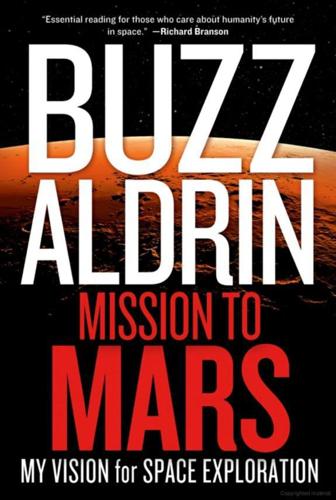
Mission to Mars: My Vision for Space Exploration
by
Buzz Aldrin
and
Leonard David
Published 1 Apr 2013
Hundreds of customers have already signed on the dotted line to get their chance to rubberneck out SpaceShipTwo windows, to see for themselves the curvature of planet Earth and the deep blackness of space. Commercial suborbital passenger flight could start in the 2013–2014 time frame—if shakeout testing of the rocket plane proceeds without a hitch at its Scaled Composites building site, the Mojave Air and Space Port in Mojave, California. Branson has often stated that, as his suborbital spaceline business gains financial momentum, seat prices can be lowered. In the interim, rocketing off into space has made its way onto a 2011 Virtuoso “Travel Dreams” survey of Top 10 Trips of a Lifetime, competing with setting sail for a world cruise, calling on all seven continents, renting a castle on the French Riviera, or lounging around on a rented private island.
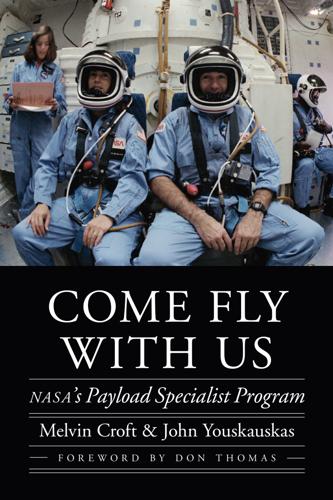
Come Fly With Us: NASA's Payload Specialist Program
by
Melvin Croft
,
John Youskauskas
and
Don Thomas
Published 1 Feb 2019
Two aerospace companies—Virgin Galactic and Blue Origin—are developing two radically different designs for passenger-carrying spacecraft intended to (initially) launch fare-paying thrill seekers on brief suborbital flights above one hundred kilometers, which is the generally accepted definition of “space.” Virgin Galactic, owned by British entrepreneur Sir Richard Branson, partnered with Burt Rutan’s Scaled Composites and the Spaceship Company of Mojave, California, to produce SpaceShipTwo. In 2004 Rutan and his team claimed the $10 million Ansari X-Prize, after successfully launching the prototype SpaceShipOne three times above the 328,000-foot mark utilizing an air-dropped, rocket-powered, composite-hulled airplane.
…
., 138, 151 Salloum, Pierre, 263 Salyut, 260, 269 SAMSO (Space and Missile Systems Organization), 35–36 SAS (space adaptation syndrome): eyes and, 69, 72–73, 145, 327–28, 330; media asking about, 248, 250, 251–52; as problem, 59, 89, 122–23, 184–85, 234–35, 289; research on, 63, 69–73, 145, 146, 293, 330; in scientific research, 96–97, 111 Satcom satellites, 287, 293, 305, 308–9, 310, 312, 313, 327–28, 336, 391 Satellite Business Systems, 235 Satellite Communications Program Office, 343 Satellite Control Facility, 160 satellites, 391; fuel for, 345–46; launch vehicles for, 168 satellites, communication: Bob Cenker and, 305–6; foreign, 258–59, 262–63, 279–80, 287, 290, 293, 369–70; Greg Jarvis and, 343; military, 209–10; of private sector, 235, 247–48, 287, 293, 308–10, 313, 328, 345; repair of, 250–51 satellites, environment-monitoring, 89, 95–96, 97 satellites, imaging, 163 satellites, missile-warning, 203, 220 satellites, scientific, 140 satellites, spy, 9, 32–33, 34, 36, 161–62, 186, 215, 369–70 satellites, sun-monitoring, 84, 199, 374, 375 satellites, tracking and data relay, 66, 98, 176–77, 353 satellites, weather, 92 Saudi Arabia, 262–63, 270, 273–74 SBS-4 satellite, 235 Scaled Composites, 386 SCG (Space Communications Group), 342, 345 Schmitt, Harrison “Jack,” 13, 39 science community, 10–11 Science in Orbit (MSFC), 69 scientific research, 26, 36, 53, 78, 105–6, 126, 375 scientist-astronauts, 10, 23, 30, 39–40, 56, 149 Scobee, Dick, 191, 339, 353 scuba diving, 170, 198 Scully-Power, Paul, 93, 94, 96, 391; background of, 87; on launch, 94–95; as “loose cannon,” 91, 100; as oceanographer, 83–84, 88–89, 92–94, 97, 98, 99, 103; as payload specialist, 90, 95, 102–3, 362; on payload specialists, 52; post-astronaut career of, 103–4; on risks, 42–43, 91–92; space travel’s effect on, 101; training of, 45 Secretary of the Air Force Special Projects (SAFSP), 161, 166, 168, 177, 178, 191, 195, 199–200 security clearances, 207, 267 Seddon, Rhea, 240, 241, 246, 247–48, 250 Sefchek, Paul A., 165, 200 Seibold, Pete, 387 Seitz Committee, 13 Seltzer, Frank, 248, 252–53 Senate Appropriations Committee, 241–42, 244 September 11, 2001, attacks, 222 Shapland, David, 61, 78 Shaw, Brewster: as commander, 216, 281, 283–84, 289, 294–95, 298, 300; in launch, 287–88; payload specialists and, 56; shift of, 66; on uniform patches, 25 Sherr, Lynn, 236 shift work, 21, 66, 75, 113, 114, 124, 127–28, 146, 153, 370 Shriver, Loren, 181; classified missions and, 175, 222; exercise of, 187; health of, 245; on MSEs, 169; on payload specialists, 169; as pilot, 183, 184, 190–91; on press, 180; on safety issues, 358, 365 shuttle imaging radar payload (SIR-B), 89, 92, 97, 99, 103 Shuttle Operations and Planning Center (SOPC), 167 shuttle program, 1–4; astronaut-to-flight ratio of, 47–48; funding for, 9, 201, 242; legacy of, 388; marketing of, 30; opinions on, 193–94, 222–23; plans for, 20–21, 48, 50; policy on, 28–29, 32–33; problems of impeding, 177, 215–16, 341, 356–59; purposes of, 9, 16, 34–35, 55, 376, 383, 385; risks of, 361, 364–65; science community and, 10, 56 shuttles: as experimental vehicles, 42, 359–60; payloads of, 11, 12, 26, 31, 34; problems of impeding, 363.
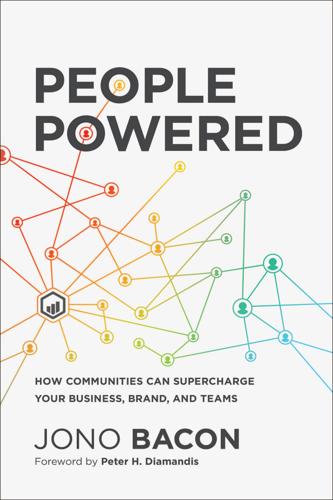
People Powered: How Communities Can Supercharge Your Business, Brand, and Teams
by
Jono Bacon
Published 12 Nov 2019
This brought the spirit of the Orteig Prize into the modern era, offering a $10 million purse to the first team able to build and fly a reusable spacecraft capable of carrying three adults to one hundred kilometers above the earth twice in two weeks. Just like the Orteig prize, when the XPRIZE was announced, the idea of a private team building and flying human-carrying spaceships looked like an impossible feat. Eight years later, on October 4, 2004, the $10 million Ansari XPRIZE for spaceflight was won by Scaled Composites and their winning vehicle, Space-ShipOne, an event that would fuel a new age of commercial space travel. While these were two different incentive prizes in two different eras, there was one clear pattern running through both: the right mixture of opportunity, potential, and a grit to succeed created a combination able to produce exponential innovation and results.
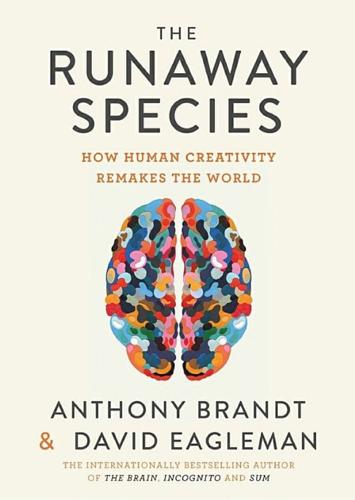
The Runaway Species: How Human Creativity Remakes the World
by
David Eagleman
and
Anthony Brandt
Published 30 Sep 2017
. © 2016 Estate of Pablo Picasso / Artists Rights Society (ARS), New York Max Kulich’s sketches for the Audi CitySmoother Courtesy of Max Kulich The Architectural Reseasrch Office’s sketches for the Flea Theater in New York Courtesy of Architectural Research Office Joshua Davis’ skethes for IBM Watson Courtesy of Joshua Davis IBM Watson on the Jeopardy set Courtesy of Sony Pictures Television Advent, Thunderbird, Starchaser, Ascender, and Proteus Courtesy of the Ansari X-Prize Scaled Composite’s SpaceShipOne Courtesy of the Ansari X-Prize Chapter 9 Einstein blouses https://www.google.com/patents/USD101756 Sarah Burton: Kate Middleton wedding dress Photo by Kirsty Wigglesworth – WPA Pool/Getty Images Sarah Burton: three dresses from the Autumn/Winter 2011-12 Alexander McQueen ready-to-ware collection Photo by Francois Guillot, AFP, Getty Images Norman Bel Geddes: Motor Coach no. 2, Roadable Airplane, Aerial Restaurant and Walless House Courtesy of the Harry Ransom Center, the University of Texas at Austin © The Edith Lutyens and Norman Bel Geddes Foundation, Inc.
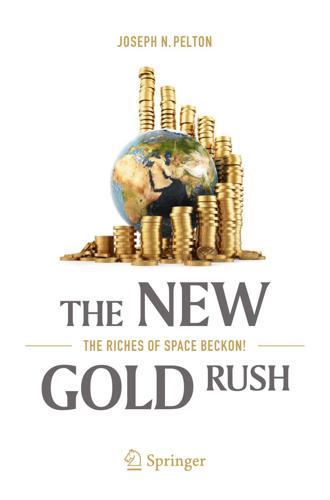
The New Gold Rush: The Riches of Space Beckon!
by
Joseph N. Pelton
Published 5 Nov 2016
Over a dozen organizations proceeded to sign up to try to compete for the XPrize that, again, most of the “wise experts” thought was impossible to win because a winning spaceplane had to be designed, built and successfully flown within just 3 years. Paul Allen, co-founder of Microsoft, however, financed Burt Rutan and his team at Scaled Composites to try. The Rutan team designed the SpaceShipOne spaceplane system that flew into space to an altitude above 100 km and then flew again with a crew within a 5-day period to meet the contest requirements. When the second flight landed on October 4, 2004, an impromptu sign was held up within the crowd that had assembled in the Mojave Desert: “SpaceShipOne, NASA None” (see Fig. 4.3).

Elon Musk: Tesla, SpaceX, and the Quest for a Fantastic Future
by
Ashlee Vance
Published 18 May 2015
Mueller, Buzza, and a couple of young engineers assembled the generator in Los Angeles and then packed it into the back of a pickup truck and drove it out to Mojave, California, to test it. A desert town about one hundred miles from Los Angeles, Mojave had become a hub for aerospace companies like Scaled Composites and XCOR. A lot of the aerospace projects were based out of the Mojave airport, where companies had their workshops and sent up all manner of cutting-edge airplanes and rockets. The SpaceX team fit right into this environment and borrowed a test stand from XCOR that was just about the perfect size to hold the gas generator.

In the Shadow of the Moon: A Challenging Journey to Tranquility, 1965-1969
by
Francis French
,
Colin Burgess
and
Walter Cunningham
Published 1 Jun 2010
On Monday, 4 October 2004, the forty-seventh anniversary of the launch of the first Soviet Sputnik, a stubby experimental vehicle with the unpretentious name of SpaceShipOne shot into history, climbing to an altitude of 69.6 miles over California’s Mojave Desert with solo pilot Brian Binnie at the controls. When the spacecraft reached an altitude exceeding 62 miles for the second time in a week (the first flight in the same craft had been under the command of Mike Melvill) Binnie earned his astronaut wings. A non government consortium called Scaled Composites, founded in 1982 by famed aero designer Burt Rutan, claimed the $10 million Ansari X Prize as the first team to achieve this historic feat. Peter Diamandis, who headed the X Prize Foundation, spoke enthusiastically of the historic event later that day. “What we have here, after forty years of waiting, is the beginning of the personal spaceflight revolution,” he stated.
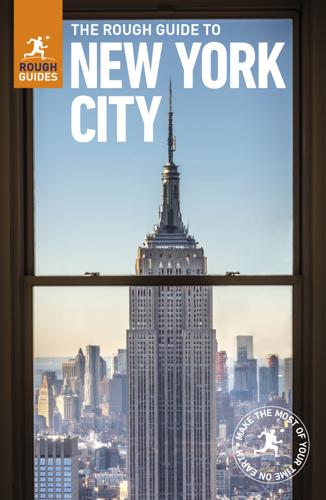
The Rough Guide to New York City
by
Rough Guides
Published 21 May 2018
Much of the artwork here will be familiar from popular reproductions: the vivid creations of Miró; Magritte’s The Menaced Assassin; Tanguy’s Furniture of Time; the famously drooping clocks of Dalí’s Persistence of Memory, astonishingly detailed for its compact size – the last of these is often on loan to other galleries. Gallery 11 holds the Mexican modernists: Frida Kahlo, José Clemente Orozco and, grandest of all, Diego Rivera’s heroic rendition of Agrarian Leader Zapata. You may find the Abstract Expressionists in Gallery 12, with large-scale compositions by Rothko, Barnett Newman and Jackson Pollock. Tiny Gallery 13 might hold Jacob Lawrence’s Migration Series, a shorthand history of the African American shift from the rural south to the urban north, or some mid-century modern theme. On long-term loan to the museum is Glenn, by Jean-Michel Basquiat, at either the beginning or end of your circuit of the floor, by the staircase; amazingly, the museum owns not a single painting of the artist.
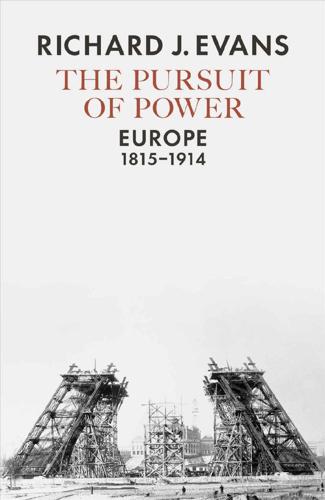
The Pursuit of Power: Europe, 1815-1914
by
Richard J. Evans
Published 31 Aug 2016
Robert Schumann did not begin to compose symphonies, concerti and chamber music until relatively late in life, while Brahms found the precedent of Beethoven so daunting that he took over two decades to write his First Symphony, which paid direct homage to his great predecessor’s Ninth Symphony in the main theme of the last movement. So dominant did the symphony become as the central expression of musical genius that several composers later in the period, such as Anton Bruckner (1824–96), Gustav Mahler (1860–1911) and Jean Sibelius, wrote few other large-scale compositions. As a mark of its importance, the symphony increased both in length, with Bruckner’s Eighth (1892) and Mahler’s Third (1896) each lasting around an hour and a half, and in scale, with vast orchestral forces and sometimes a chorus as well. So many performers were involved in Mahler’s Eighth Symphony (1910) that it was popularly known as the ‘Symphony of a Thousand’.
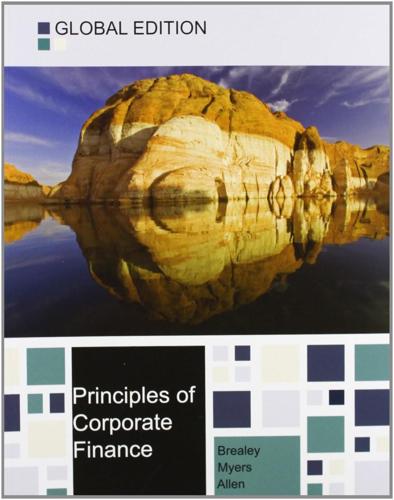
Principles of Corporate Finance
by
Richard A. Brealey
,
Stewart C. Myers
and
Franklin Allen
Published 15 Feb 2014
But in well-functioning capital markets, shareholders will vote for only one of these goals. Which one? Why? 8. Maximizing shareholder value Ms. Espinoza is retired and depends on her investments for her income. Mr. Liu is a young executive who wants to save for the future. Both are stockholders in Scaled Composites, LLC, which is building SpaceShipOne to take commercial passengers into space. This investment’s payoff is many years away. Assume it has a positive NPV for Mr. Liu. Explain why this investment also makes sense for Ms. Espinoza. 9. Ethical issues The box on page 11 describes the controversial involvement of Goldman Sachs in a financing deal with Greece.